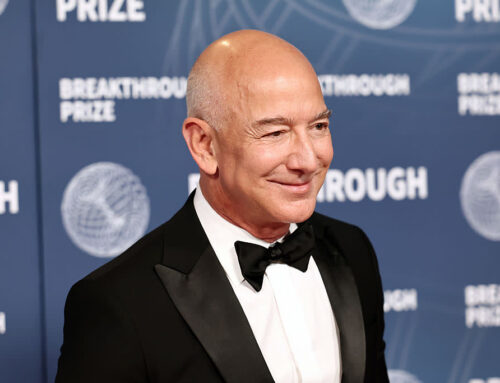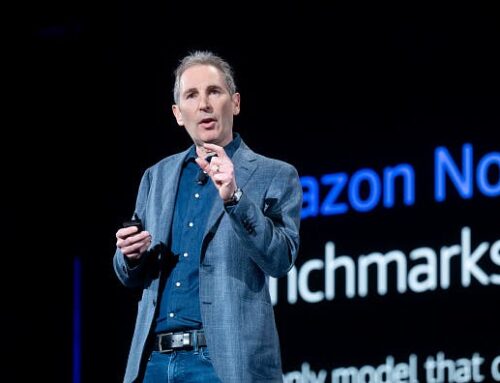Banks with bloated cost structures will suffer as savers turn investors; fittest will surv
November 16, 2025
‘Over 40 Yrs, Capital Discipline Has Shaped Us… Two Years After I Stepped Down, The Institution Has Managed The Transition & Is Thriving With Leaders Like Ashok Vaswani’Two years after stepping down as Kotak Mahindra Bank’s CEO,Uday Kotaksays he continues to aim to contribute as a key stakeholder and board member to uphold the brand that carries his name. As the group enters its 40th year, Kotak outlined his ambition to build an institution that endures while speaking to TOI in an interview along with the bank’s MD & CEO Ashok Vaswani.Vaswani, who earlier served as chief digital officer at the 300-year-old Barclays, said technology is reshaping the industry, and his priority is to evolve with the economy and the sector with a sharper focus on customers and technology. Excerpts:Kotak has been seen as a potential acquirer. The latest speculation is over IDBI Bank. What is your view on opportunities in the financial sector?Uday Kotak: We did acquire ING Vysya Bank. On your specific question on IDBI Bank, I’m happy to tell you that I’m blissfully unaware about the situation. My broader view is that the financial sector has structurally changed. Customers now move seamlessly between deposits, mutual funds, equities and other products. Savers are becoming investors, and ‘money in motion’ is replacing lazy savings. Nobody will keep large sums in current or savings accounts for long; money will shift from a 2.5% savings rate to a 6% liquid fund above a threshold.As this happens, the advantages of regulatory moats will keep diluting.Banks with bloated cost structures will feel the strain as cheap, sticky float migrates to higher-yield options, pushed further by tax incentives that favour investors over depositors. Banks will be forced to go granular because cheap money will come in smaller ticket sizes, while operating costs remain far higher than those of mutual funds – liquid funds run at about 10 basis points (100bps = 1 percentage point), equity funds at 50-75bps, while banks operate at about 2.5% between saver and borrower.This is a fundamental structural shift in financial intermediation, and institutions must serve customers across products rather than think in verticals. We see the transition: mutual fund AUM was about 15% of bank deposits in FY20; today it is around 35%, and I expect this to double to roughly 70% in five years, even as deposits grow more slowly. Only the fittest players will adapt and survive.Does that forecast sound too dire for the bank?Ashok Vaswani: Kotak’s strength is its breadth. We’re one of India’s broadest financial groups, able to serve a customer across savings, investments, demat, lending and more – all in a seamless, unified way.We own 100% of our 19 subsidiaries, so value created in mutual funds, capital markets, insurance and other businesses stays within the group and compounds.Our model is simple: pick target segments and build a relevant product suite. It works across the franchise – from private banking and Solitaire at the affluent end, to 811 for mass retail, to SME and institutional clients, where our investment bank, treasury, research and corporate teams work as one.On deposits, the challenge is pricing. Affluent customers keep larger balances but move more into mutual funds, while core India customers provide granular, low-cost deposits in smaller tickets but large volumes. We also draw low-cost flows from businesses like domestic custody and from products such as ‘active money’, which gives FD-like returns with savings-like liquidity. The task is to capture these flows continuously – building the pipes and reservoirs to hold them, even if only for short periods.Have you been too conservative on branch expansion?AV: The top 70-75 cities account for roughly three-fourths of India’s deposits, and serving them needs about 3,500 branches. Branches matter because they signal a bank’s presence, but they’re essentially billboards. I’ve seen banks worldwide expand far beyond what they need and then spend years shutting those branches. I don’t want to repeat that. A network in the 3,400-3,700 range feels right for us.I also believe that if you can watch, learn, shop and transact on your phone, you should be able to bank on it too.If customers still feel the need to visit a branch, that reflects our failure to let them do everything digitally. A digital process doesn’t get tired, doesn’t make mistakes, operates 24/7 and enforces rules consistently. A physical branch can’t match that.You launched 811 in 2017. Is the market ready for digital banking?UK: Nubank, a branch-less bank, is Brazil’s largest company by market value at about $80 billion, and (Warren) Buffett is among its biggest investors. In the UK, Revolut – another digital-only player – has grown to a valuation larger than many traditional banks.In India, Groww didn’t exist before 2017 and now accounts for roughly a third of new mutual fund SIPs, all without branches. To me, the future of banking is unmistakably digital.Is the market ready to pay for services?AV: You have to be very careful as to how you define fees and pricing. The minimum balance requirement is in itself a pricing mechanism. Think of it like buffet versus a la carte: you can keep a minimum balance, or choose to pay only for the services you use.Affluent customers take more products with larger ticket sizes, while core India customers use fewer services and prefer paying small fees for what they need. The economics differ, so we offer both and let customers choose.You’ve partnered foreign firms in several ventures, yet you’ve also flagged concerns over FDI and the need for guardrails. How do they reconcile?UK: I have always welcomed foreign investments, but I believe clear guardrails are essential. In the 1990s, India’s capital markets were at a very early stage and we were a young firm, so partnering with Goldman Sachs helped us learn and build expertise.The same was true in car finance with Ford Credit and later in insurance with Old Mutual. We partnered to acquire best-in-class knowledge, and once we felt confident, we bought back those stakes and built the businesses ourselves. I support India opening up to foreign investment, but rules must be fair and transparent for all players. In recent years, ownership across banks has shifted toward domestic investors as mutual funds and insurers raise their stakes while foreign holdings decline.This reflects a structural change in which the Indian saver has become the investor.It is a positive trend, but one that needs to be nurtured responsibly.As someone who chaired a corporate governance panel, how do you see the role of bank boards amid recurring governance issues in private banks?UK: I see corporate governance resting on four pillars, each with a distinct role. Management is the first line, responsible for embedding a genuine commitment to governance in day-to-day decisions. The board is the second, and in a leveraged institution like a bank, its oversight of strategy, risk and conduct is critical for long-term stability.The regulator is the third pillar, providing intensive supervision and ensuring compliance across the system.The fourth is shareholders, who must be willing to act when governance slips, including making tough calls on the board or management. Within this framework, I fully agree that boards should own outcomes – they must stay agile, alert and active.What role do you see for management in fostering a culture of governance?AV: I think Kotak has done this well, and it’s something we must work hard to preserve.For me, it comes down to culture. People define culture differently, but I see it as a product of what an organisation rewards and what it penalises. When the right behaviours are recognised, you get a culture of openness, transparency and honesty. We take pride in how we govern the organisation, but we’re not complacent. It’s something we reinforce every day.Kotak’s often accused of retaining excess capital and a cautious approach to risk. Has it led to missed opportunities?UK: Over 40 years we grew from a frugal startup that raised Rs 30 lakh through personal and family borrowing.Capital discipline shaped us. We took calculated risks from the start – bill discounting with high contingent leverage, car finance against Citibank by taking inventory risk with Maruti, and backing Godrej’s first public issue with a safety net despite our small balance sheet. We survived the 1997 NBFC collapse, when 3,980 of 4,000 failed, because we had raised capital from Goldman and Ford and halved our loan book in time.What looks like excess capital today comes from strong cash-generating businesses and early bets like MCX, bought for Rs 459 crore in 2014 and now worth about Rs 7,500 crore.One feature of Kotak has been the lifelong employment of a lot of senior management. Was this by design?UK: We built a strong senior team because people like Shanti, Deepak, Jaimin, Narayan, Gaurang all of us started with a mindset of middle-class professionals taking a chance in a young financial sector. There was no grand plan for value or wealth creation – just a shared drive to break the glass and make things happen – kuch karna hain.It was inter-generational… most of us were within a few years of each other in age, joined between the late ’80s and mid-90s, and grew together.Two years after I stepped down in Sept 2023, the institution has managed the transition and is thriving, with leaders like Mr Vaswani and a mix of long-time managers and newer hires in technology, marketing and risk. That blend of continuity and renewal is essential if you want an institution to outlast the individuals who built it.How do you hire at a time when credit decisions are taken by platforms at the back-end and front-end sees lot of churn?AV: I joke that chartered accountants got us here and engineers will take us forward. Skills are shifting across industries, and the people we need now are those who can keep learning, adapt on the job and stay focused on the customer. Front-line roles – relationship managers, private bankers, branch staff and call-centre teams – have different skill needs and naturally different churn, with branches seeing the most.Our goal is to lift the quality of the platforms they work on so that once they experience a strong system, they won’t want to move to a weaker one. It’s a continuous journey.Inflation numbers are out, do you feel RBI is behind the curve in interest rates?UK: The fall in wholesale inflation is because of GST cut. We have to go past the event. My sense, and I’m not close enough, is that there could be a likelihood of a 25bps rate cut either in Dec or Feb.What is the outlook on net interest margin, credit growth?AV: I have personal views on rates, but what matters is how the bank handles it. A lower-rate environment hurts us more, and deeper cuts are harder, though we’re planning for both outcomes. Q1 was weak as MFI credit costs peaked, rate cuts came late in quarter and margins felt timing impact. Those pressures ease from Q2, and if there are no further cuts, margins should firm up in Q3-Q4 as deposit repricing catches up.
Search
RECENT PRESS RELEASES
Related Post





